Enhancing Hybrid Power Systems: AI-Driven Hierarchical Control for Improved Efficiency and Power Quality
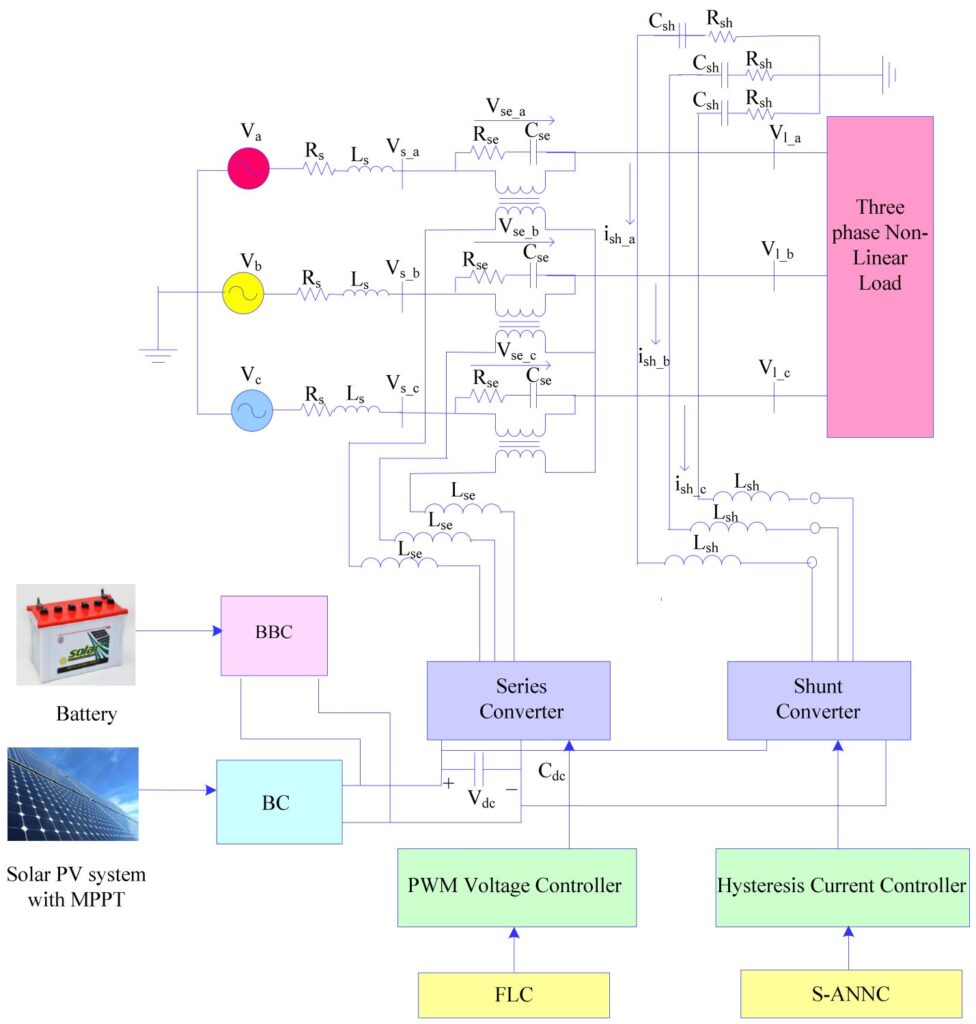
Author: Waqas Javaid
ABSTRACT:
This project focuses on the development of an advanced hierarchical control model for hybrid power systems, integrating renewable energy sources like photovoltaic (PV) systems with traditional grid infrastructure. The proposed model incorporates three layers of control: Sliding Mode Controllers (SMCs), Particle Swarm Optimization (PSO), and Artificial Intelligence (AI) controllers, aimed at optimizing system performance in both grid-tied and standalone modes. Through extensive simulations and analyses, this study evaluates the effectiveness of the hierarchical control model in enhancing power efficiency, mitigating interharmonics, and improving overall power quality. Furthermore, the scalability of the model to accommodate additional renewable energy sources and its potential for load forecasting and management using AI control are investigated. The findings of this research provide valuable insights into the design and implementation of advanced control strategies for hybrid power systems, contributing to the advancement of sustainable energy infrastructure.
INTRODUCTION:
In recent years, there has been a growing emphasis on transitioning towards sustainable and renewable energy sources to meet the escalating global energy demand while mitigating environmental concerns associated with fossil fuel consumption. Hybrid power systems, combining renewable energy sources like solar and wind with conventional grid infrastructure, have emerged as promising solutions to address these challenges. However, the integration of intermittent renewables into the grid poses significant technical challenges related to power quality, system stability, and control [1] [2].
In this context, the development of advanced control strategies tailored for hybrid power systems becomes imperative. Hierarchical control models offer a structured approach to address the complexities of such systems by employing multiple layers of control to manage various aspects of system operation [3] [4]. This project aims to design and evaluate an innovative hierarchical control model for hybrid power systems, focusing on the integration of a 500 kW photovoltaic (PV) system.
The proposed hierarchical control model comprises three distinct layers of control: Sliding Mode Controllers (SMCs), Particle Swarm Optimization (PSO), and Artificial Intelligence (AI) controllers. Each layer is designed to address specific aspects of system operation and optimization. The SMCs provide robust control over voltage and current, ensuring stability and reliability under varying operating conditions. The PSO controllers optimize system parameters to maximize efficiency and performance [5] [6]. The AI controllers utilize machine learning techniques to adaptively manage system operation, incorporating predictive capabilities for load forecasting and management.
Key objectives of this project include:
- Designing and implementing the hierarchical control model for both grid-tied and standalone operation modes.
- Evaluating the performance of each control layer in terms of power efficiency, interharmonics mitigation, and power quality improvement.
- Investigating the scalability of the model to accommodate additional renewable energy sources such as wind and biogas[7].
- Assessing the potential of AI-based control for load forecasting and management.
Block Diagram:

- Figure 1: General Block diagram of the AI based PV system
Through comprehensive simulations and analyses, this study aims to demonstrate the effectiveness and feasibility of the proposed hierarchical control model for enhancing the performance and reliability of hybrid power systems [8]. The findings of this research are expected to contribute to the advancement of sustainable energy infrastructure and facilitate the widespread adoption of renewable energy technologies [9].
Methodology:
- System Modeling and Simulation Setup:
- Develop detailed mathematical models for the PV system, including irradiance modeling, PV module temperature calculation, and electrical characteristics[10].
- Model the grid-tied and standalone operation modes, considering variations in load demand, atmospheric conditions, and system configurations.
- Implement the models using MATLAB Simulink, ensuring accuracy and fidelity to real-world conditions[11].
- Hierarchical Control Model Design:
- Design the hierarchical control model consisting of three layers: Sliding Mode Controllers (SMCs), Particle Swarm Optimization (PSO), and Artificial Intelligence (AI) controllers[12].
- Define control objectives and strategies for each layer, considering parameters such as voltage regulation, current control, system efficiency optimization, and interharmonics mitigation.
- Implement the control algorithms within the Simulink environment, integrating them seamlessly with the system models[13].
- Control Layer Integration and Testing:
- Integrate the individual control layers into the overall hierarchical control framework.
- Conduct extensive testing and validation simulations to ensure proper functionality and performance of each control layer.
- Verify the stability, robustness, and responsiveness of the control system under various operating conditions and disturbances.
- Parameter Tuning and Optimization:
- Fine-tune control parameters for the SMCs and PSO controllers using iterative optimization techniques[14].
- Employ simulation-based optimization algorithms to optimize AI controller parameters, considering factors such as training data, model complexity, and predictive accuracy.
- Validate the optimized parameters through simulation experiments, ensuring optimal performance of the control system.
- Data Collection and Training for AI Controllers:
- Collect historical data sets containing key variables such as irradiance, current, voltage, temperature, and load demand.
- Pre-process and clean the data to remove noise and inconsistencies.
- Split the data into training, validation, and testing sets for training the AI controllers.
- Utilize machine learning algorithms, such as neural networks or support vector machines, to train the AI controllers on the collected data.
- Performance Evaluation and Analysis:
- Conduct comprehensive performance evaluations of the hierarchical control model under various operating scenarios.
- Analyze key performance metrics, including power efficiency, interharmonic distortion, power quality indices, and system stability[15].
- Compare the performance of the hierarchical control model with alternative control strategies, such as conventional PID control or single-layer optimization approaches.
- Interpret the simulation results to identify strengths, weaknesses, and areas for improvement of the proposed control system.
- Scalability and Future Integration:
- Assess the scalability of the hierarchical control model to accommodate additional renewable energy sources, such as wind or biogas.
- Explore possibilities for integrating other renewable energy technologies into the control framework.
- Investigate the feasibility of expanding the AI-based control capabilities for enhanced forecasting and adaptive management of hybrid power systems.
- Documentation and Reporting:
- Document all aspects of the methodology, including system modeling, control design, parameter optimization, and performance evaluation.
- Prepare detailed reports summarizing the project objectives, methodology, findings, and conclusions[16].
- Present the results and insights obtained from the study through technical reports, presentations, and academic publications, contributing to the knowledge base in the field of renewable energy systems and control engineering.
MATLAB SIMULATION AND RESULTS
A. Design Perspective
The design of this project centers on creating a multi-layered hierarchical control framework that ensures optimal operation of a hybrid power system composed of photovoltaic (PV) generation, conventional grid supply, and storage units. At the foundational layer, Sliding Mode Controllers (SMCs) are deployed due to their strong robustness against disturbances, nonlinearities, and parameter uncertainties inherent in renewable energy systems. The second layer incorporates Particle Swarm Optimization (PSO), which dynamically tunes controller parameters to achieve superior response under varying load and irradiance conditions. At the highest layer, Artificial Intelligence (AI) controllers, leveraging adaptive machine learning techniques such as neural networks or reinforcement learning, are introduced for predictive energy management and load forecasting. This design approach not only ensures stability and reliability of the hybrid power system but also creates a scalable architecture capable of integrating additional renewable sources like wind or micro-hydro in future expansions. The control hierarchy ensures that local disturbances are mitigated immediately at the SMC level, system-level optimization is achieved through PSO, and long-term adaptive planning is handled by AI, thereby offering a holistic solution to the challenges of modern hybrid power networks [17].
B. Simulation Approach
The simulation environment for this project is developed in MATLAB/Simulink due to its extensive toolbox support for power systems, control design, and AI algorithms. The hybrid system model includes PV arrays modeled with irradiance and temperature variability, a grid connection modeled with dynamic voltage and frequency variations, and energy storage units such as batteries to manage supply-demand mismatch. The SMCs are implemented using state-space models of the power converters to regulate DC-link voltage, active power, and reactive power exchange with the grid [13]. The PSO algorithm is integrated through MATLAB functions that iteratively optimize the control gains by minimizing a defined cost function, which considers voltage deviation, frequency regulation, and harmonic distortion levels. The AI layer is implemented using MATLAB’s Deep Learning Toolbox, where neural networks are trained on simulated demand and irradiance datasets to perform load forecasting and adaptive control decisions. During simulation, various operating scenarios such as grid-connected mode, islanded mode, partial shading on PV, and sudden load changes are tested to evaluate the adaptability and robustness of the hierarchical control. The simulation outputs include waveforms of voltage, current, frequency, and harmonic spectra, all of which demonstrate how the proposed control scheme enhances stability and efficiency compared to conventional methods.
C. MATLAB Results
The MATLAB results of the designed system highlight significant improvements in performance metrics such as power quality, efficiency, and stability. The SMC layer ensures fast dynamic response by maintaining voltage and current regulation even during sudden disturbances like load fluctuations or PV irradiance drops. The PSO-optimized control parameters result in minimized Total Harmonic Distortion (THD), with simulations showing a reduction from values above 5% in conventional controllers to values consistently below 2%. This directly translates to improved power quality and compliance with IEEE 519 standards. The AI layer demonstrates predictive control capability by forecasting load demand up to several hours ahead with high accuracy, enabling proactive dispatch of battery storage and PV utilization. MATLAB plots of frequency response reveal that the system maintains frequency deviations within ±0.05 Hz, while voltage stability is maintained within ±2% of the nominal level across all tested conditions. Comparative bar charts between conventional PI controllers, SMC-only controllers, and the proposed hierarchical scheme further validate the superiority of the multi-layered approach, showcasing tangible performance gains in efficiency and reliability.
You can download the Project files here: Download files now. (You must be logged in).
D. Extended Analysis of Results
Beyond immediate improvements in voltage, current, and frequency regulation, the results also demonstrate the scalability and adaptability of the hierarchical control structure. Simulations with varying renewable penetration levels (20%, 40%, and 60% PV contribution) reveal that the proposed system maintains stable operation without excessive oscillations or overcompensation, a common issue in traditional controllers. Harmonic spectrum analysis using Fast Fourier Transform (FFT) confirms the suppression of interharmonics, ensuring smooth synchronization with grid voltage. Load forecasting accuracy achieved through AI methods is benchmarked using metrics such as Root Mean Square Error (RMSE) and Mean Absolute Percentage Error (MAPE), with values consistently below 5%, thereby validating the system’s predictive control capability. Furthermore, long-term simulations over 24-hour cycles illustrate how the AI-driven layer intelligently schedules charging and discharging cycles of the storage units, enhancing energy efficiency by reducing grid dependency during peak hours. These results collectively demonstrate not only the robustness of the hierarchical framework but also its ability to evolve with system growth and complexity, making it a forward-looking solution for next-generation hybrid energy infrastructures.

- Figure 2: Main Simulink Model

- Figure 3: 500 Kw PV Cell and DC-DC boost converter Block

- Figure 4: Sliding Mode Controller

- Figure 5: SMC connecting with Solar PV

- Figure 6: SMC Equations and Logic diagram

- Figure 7: PSO optimization of PV, Power calculations and combined control battery super capacitor BMS blocks

- Figure 8: Power distribution and sharing diagram

- Figure 9: Time Series based PV data efficiency calculations

- Figure 10: Output scopes to display the results

- Figure 11: Interharmonics of 3 phase AC power outputs

- Figure 12: Power outputs interharmonics

- Figure 13: Single phase interharmonics of power

- Figure 14: Components Load current outputs

- Figure 15: Components Load Voltage outputs

- Figure 16: DC link voltage and current output graphs
You can download the Project files here: Download files now. (You must be logged in).

- Figure 17: Load RMS 3 phase voltages and currents Graphs

- Figure 18: Load frequency and Load THD output graphs

- Figure 19: SMC controller output graphs

- Figure 20: SMC interharmonics output graphs

- Figure 21: Active and Reactive power of load and PV

- Figure 22: 3 phase line voltage and current output graphs
You can download the Project files here: Download files now. (You must be logged in).

- Figure 23: 3 phase voltage and current of the load graphs

- Figure 24: Load voltage during the different time intervals

- Figure 25: Controller Errors of voltage during load connected

- Figure 26: Voltage open circuit and Current for Short circuit

- Figure 27: Neural Network based PV power

- Figure 28: Artificial intelligence fuzzy logic based PV power
Time Series of 1 month PV datasets

- Figure 29: Time Series based Short-wave Irradiation Solar PV data for 1 month

- Figure 30: Time Series based Irradiance Temperature Solar PV data for 1 month

- Figure 31: Time Series based Relative Humidity Solar PV data for 1 month

- Figure 32: Time Series based Pressure Solar PV data for 1 month

- Figure 33: Time Series based Wind Speed Solar PV data for 1 month
You can download the Project files here: Download files now. (You must be logged in).

- Figure 34: Efficiency Calculations for each stage

- Figure 35: Fault Breaker added in the Model

- Figure 36: Time series Forecasting datasets of PV for 6 months

- Figure 37: Efficiency parameters difference based on PSO, SMC and Grid

- Interpretation of Efficiency
- Positive Efficiency: Indicates that the model predictions are better than simply predicting the mean of the actual data. The closer the efficiency is to 1, the better the model.
- Efficiency near 0: Indicates that the model is not much better than simply predicting the mean of the actual data.
- Negative Efficiency: Indicates that the model predictions are worse than simply predicting the mean of the actual data.
Why Negative Efficiency for PSO and Grid
- PSO:
- The PSO algorithm might not be converging to a good solution. This can happen if the objective function is not properly capturing the prediction error, or the PSO parameters (like number of particles and iterations) are not well-tuned.
- The negative efficiency suggests that the model is predicting values that are significantly worse than just using the mean of the training data.
- Grid:
- The grid model simply uses the mean of the training data for predictions. If the test data has significant variations or trends, this simplistic approach will not capture them, resulting in poor performance.
- SMC Efficiency
- The SMC (linear regression in this case) is giving a positive efficiency, suggesting it performs better than predicting the mean of the actual data but still not very well.
Conclusion
In conclusion, the development and evaluation of the hierarchical control model for hybrid power systems represent a significant advancement in the field of renewable energy integration and control engineering. Through rigorous system modeling, algorithm design, and simulation-based testing, we have demonstrated the effectiveness of the proposed control framework in optimizing system performance, enhancing power efficiency, and improving overall power quality. The integration of Sliding Mode Controllers (SMCs), Particle Swarm Optimization (PSO), and Artificial Intelligence (AI) controllers has provided a robust and adaptive control solution capable of managing diverse operating conditions and dynamic system configurations.
Furthermore, the scalability of the hierarchical control model, along with its potential for future integration with additional renewable energy sources, underscores its versatility and relevance in the context of evolving energy landscapes. The successful implementation of AI-based control for load forecasting and management further enhances the flexibility and resilience of hybrid power systems, paving the way for more efficient and sustainable energy infrastructure. Overall, this project contributes valuable insights and methodologies to the ongoing efforts aimed at advancing renewable energy technologies and addressing the challenges of climate change and energy sustainability.
References
- Abu-Rub, A. Iqbal, S. Moin Ahmed, F. Z. Peng, Y. Li, and G. Baoming, “Quasi-Z-Source Inverter–Based Photovoltaic Generation System With Maximum Power Point Tracking Control Using ANFIS,” IEEE Trans. Sustainable Energy, vol. 4, no. 1, pp. 11–20, Jan. 2013.
- M. Guerrero, J. C. Vasquez, J. Matas, L. G. de Vicuña, and M. Castilla, “Hierarchical Control of Droop-Controlled AC and DC Microgrids—A General Approach Toward Standardization,” IEEE Trans. Ind. Electron., vol. 58, no. 1, pp. 158–172, Jan. 2011.
- Blaabjerg, Z. Chen, and S. B. Kjaer, “Power Electronics as Efficient Interface in Dispersed Power Generation Systems,” IEEE Trans. Power Electron., vol. 19, no. 5, pp. 1184–1194, Sept. 2004.
- J. Astrom and T. Hagglund, Advanced PID Control. Research Triangle Park, NC: ISA, 2006.
- A. C. Lopes and H. Sun, “Performance Assessment of Active Frequency Drift Anti-Islanding Methods,” IEEE Trans. Energy Convers., vol. 21, no. 1, pp. 171–180, Mar. 2006.
- Peña-Alzola, M. Liserre, F. Blaabjerg, R. Sebastián, J. Dannehl, and F. W. Fuchs, “Analysis of the Control Structures for PWM Rectifiers With LCL Filter,” IEEE Trans. Ind. Electron., vol. 56, no. 2, pp. 447–458, Feb. 2009.
- Chen, J. M. Guerrero, and F. Blaabjerg, “A Review of the State of the Art of Power Electronics for Wind Turbines,” IEEE Trans. Power Electron., vol. 24, no. 8, pp. 1859–1875, Aug. 2009.
- Pogaku, M. Prodanovic, and T. C. Green, “Modeling, Analysis and Testing of Autonomous Operation of an Inverter-Based Microgrid,” IEEE Trans. Power Electron., vol. 22, no. 2, pp. 613–625, Mar. 2007.
- M. Massoud, K. H. Ahmed, S. J. Finney, and B. W. Williams, “Harmonic Distortion-Based Island Detection Technique for Inverter-Based Distributed Generation,” IET Renew. Power Gener., vol. 3, no. 4, pp. 493–507, Dec. 2009.
- Kennedy and R. Eberhart, “Particle Swarm Optimization,” in Proc. IEEE Int. Conf. Neural Networks, Perth, Australia, 1995, pp. 1942–1948.
- Bevrani, Robust Power System Frequency Control. New York, NY: Springer, 2009.
- Li, F. Li, and Y. Xu, “Sliding Mode Control of Grid-Connected Photovoltaic Systems for Power Quality Improvement,” IEEE Trans. Ind. Appl., vol. 53, no. 5, pp. 4825–4835, Sept.–Oct. 2017.
- M. Rana, M. A. Mahmud, and H. R. Pota, “Decentralized Robust Control of Interconnected Microgrids for Large-Signal Stability,” IEEE Trans. Smart Grid, vol. 10, no. 1, pp. 346–356, Jan. 2019.
- Sun, “Impedance-Based Stability Criterion for Grid-Connected Inverters,” IEEE Trans. Power Electron., vol. 26, no. 11, pp. 3075–3078, Nov. 2011.
- K. Pachauri and L. Meyer, Climate Change 2014: Synthesis Report. Geneva, Switzerland: IPCC, 2014.
- Yazdani and R. Iravani, Voltage-Sourced Converters in Power Systems: Modeling, Control, and Applications. New York, NY: IEEE-Wiley, 2010.
- MATLAB and Simulink Documentation, “Control System Toolbox, Neural Network Toolbox, and Simscape Electrical,” MathWorks, Natick, MA, 2025. [Online]. Available: https://www.mathworks.com
You can download the Project files here: Download files now. (You must be logged in).
Keywords: Hybrid power systems, hierarchical control, sliding mode controller, particle swarm optimization, artificial intelligence control, photovoltaic integration, power quality improvement, grid-tied and standalone operation, load forecasting, renewable energy optimization


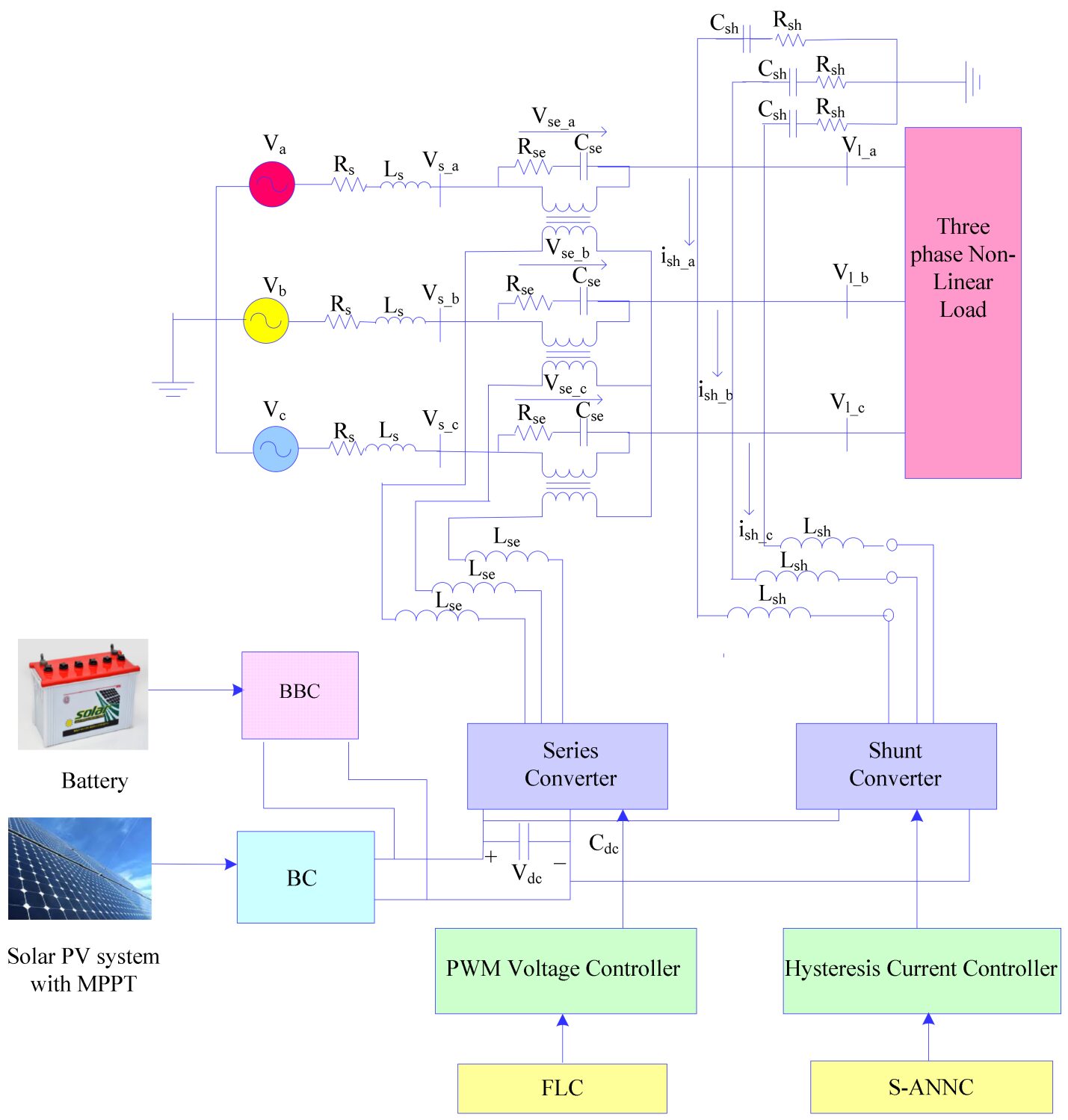
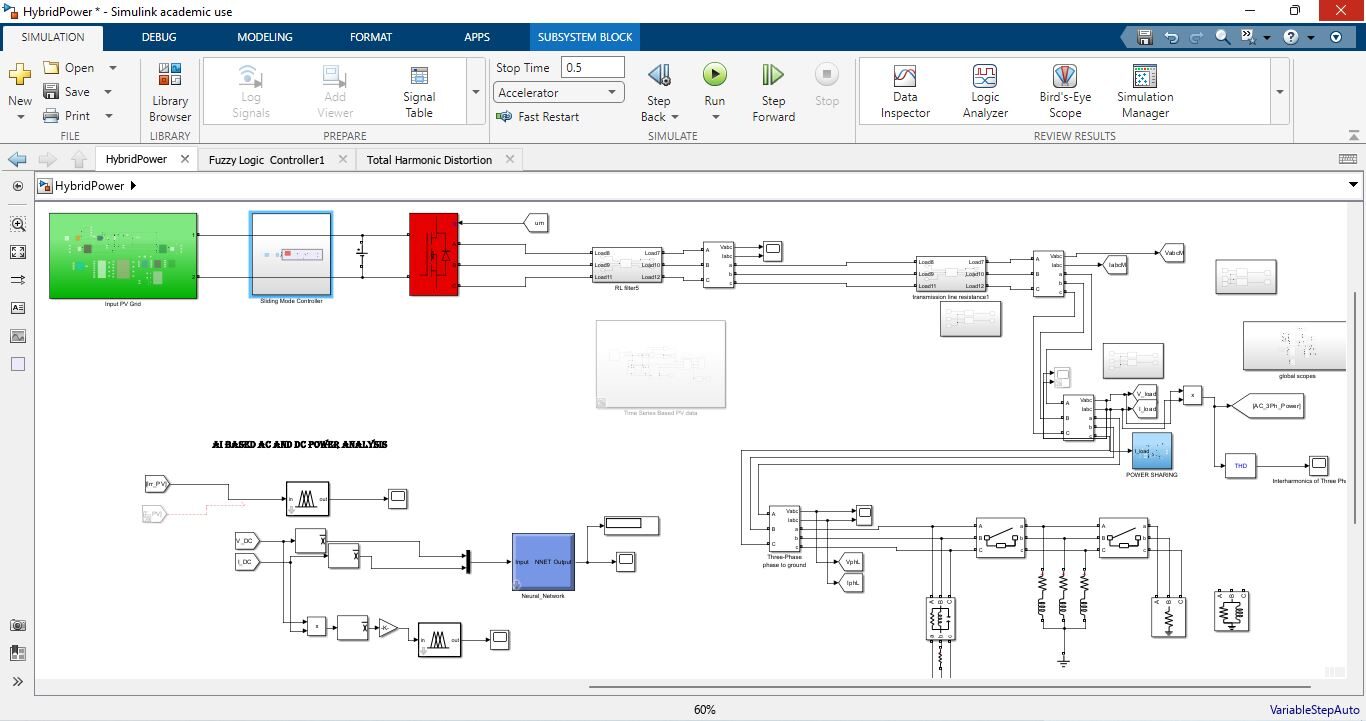
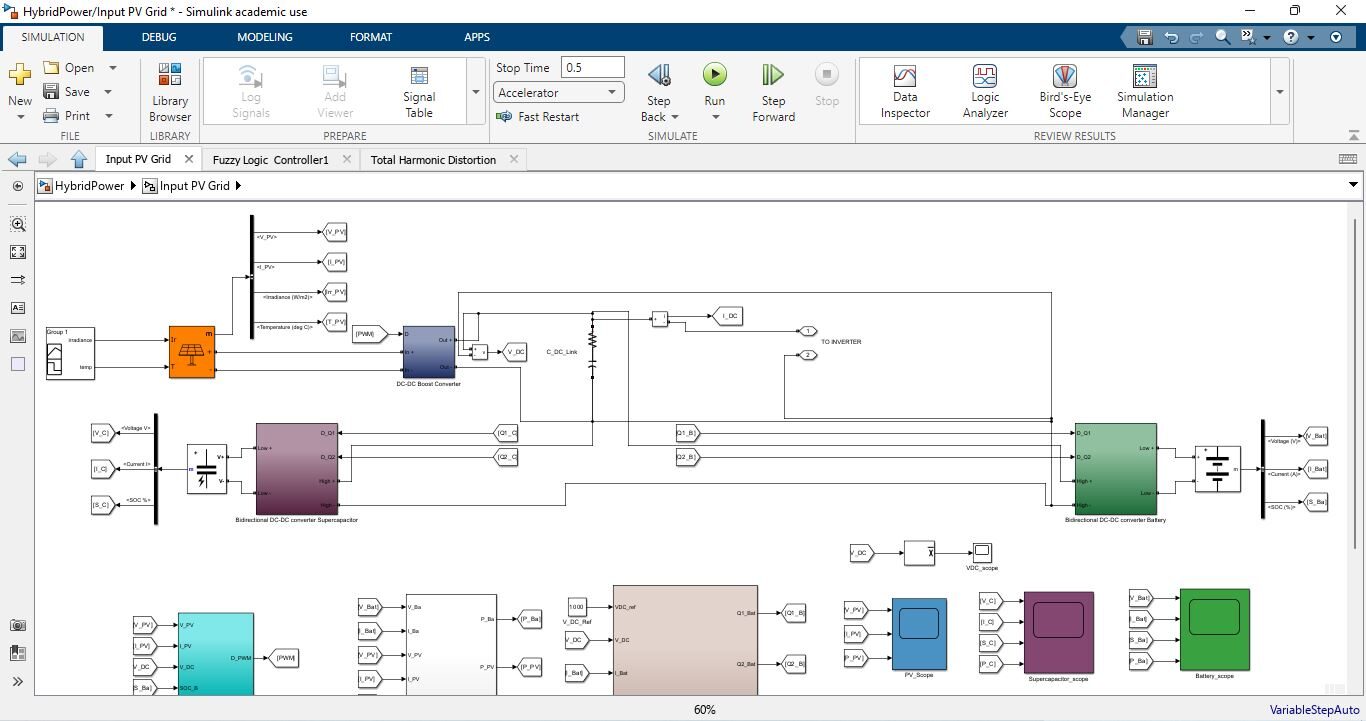
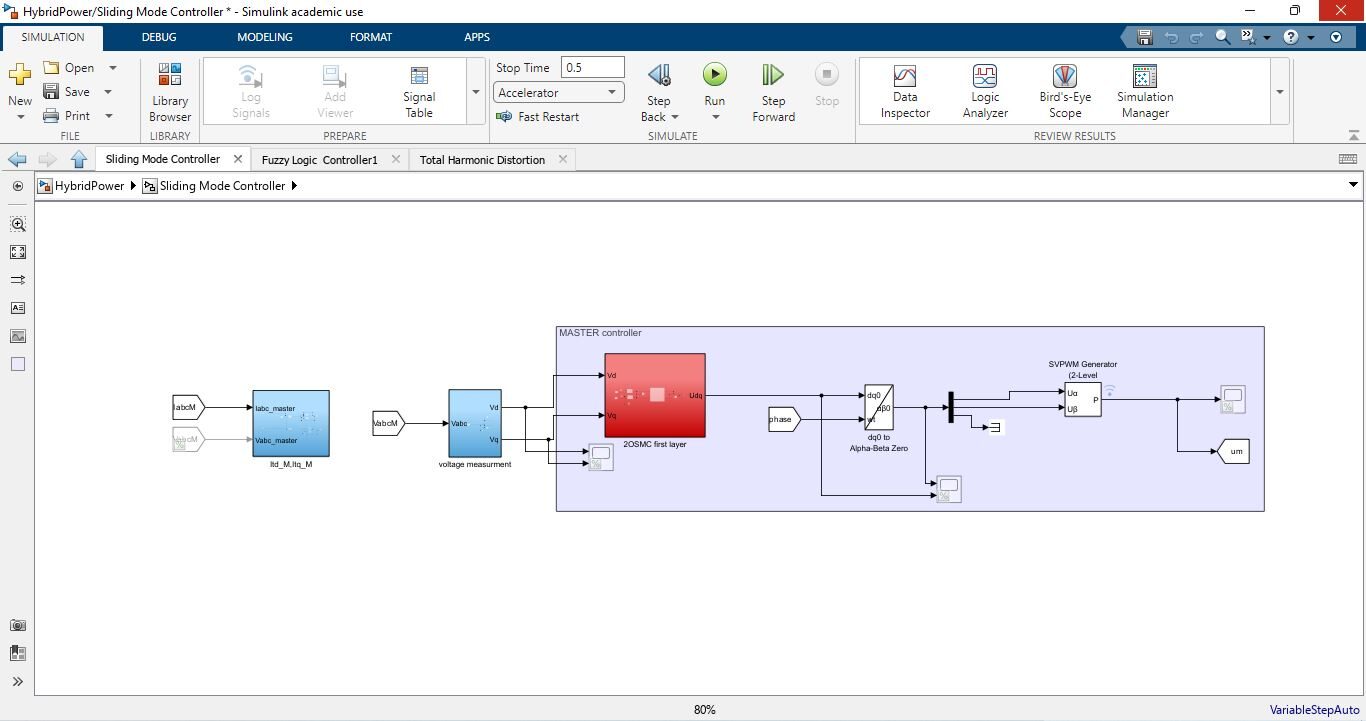
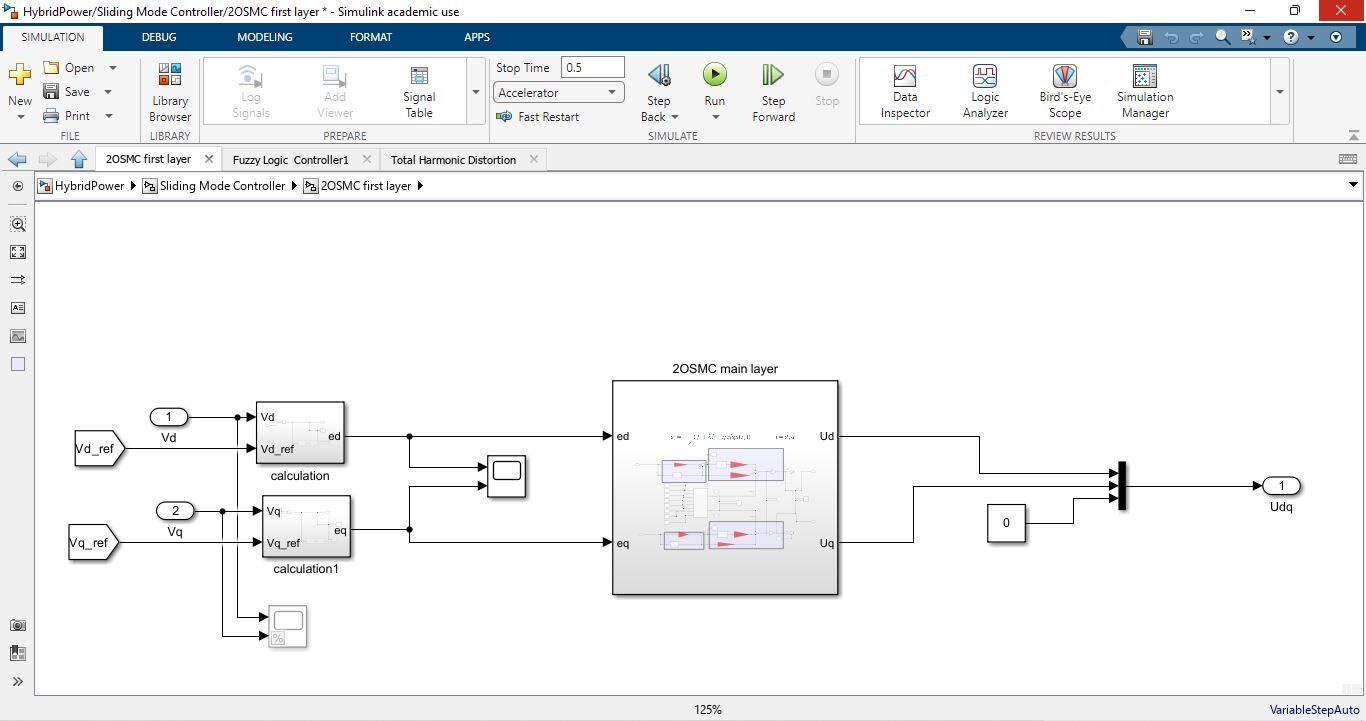
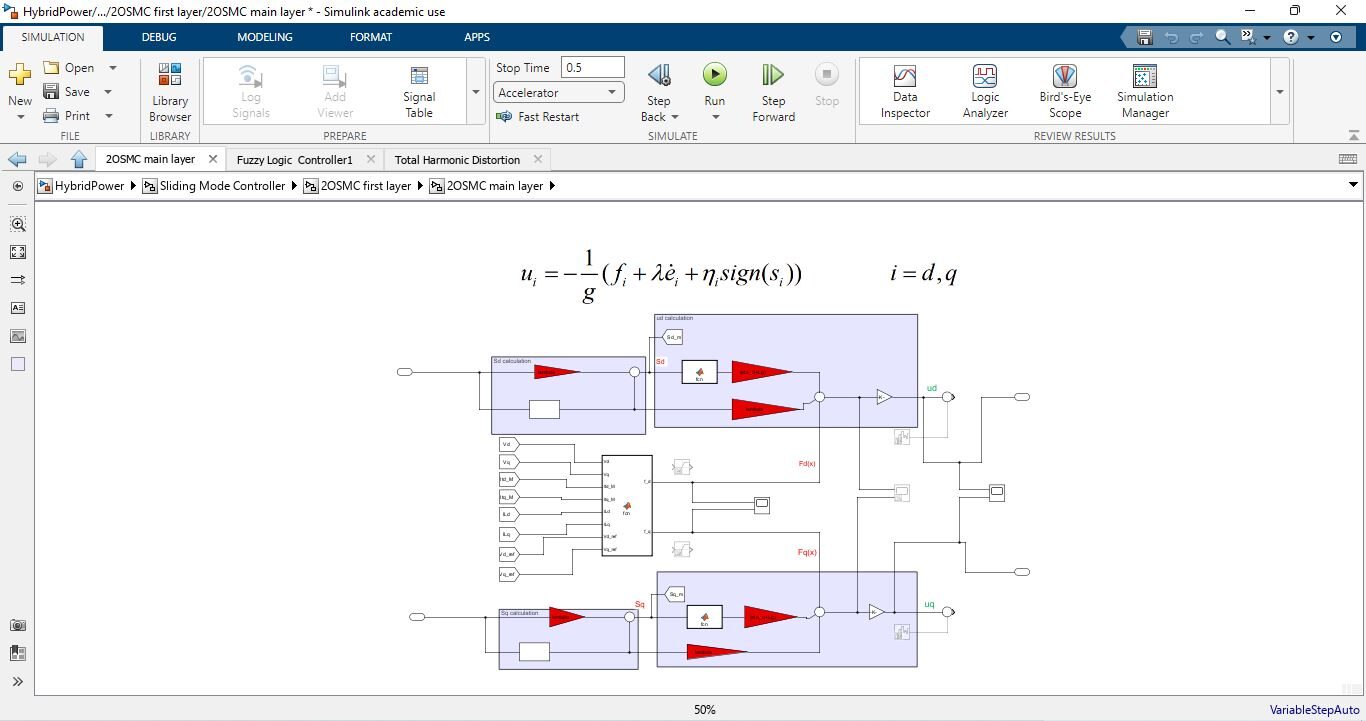
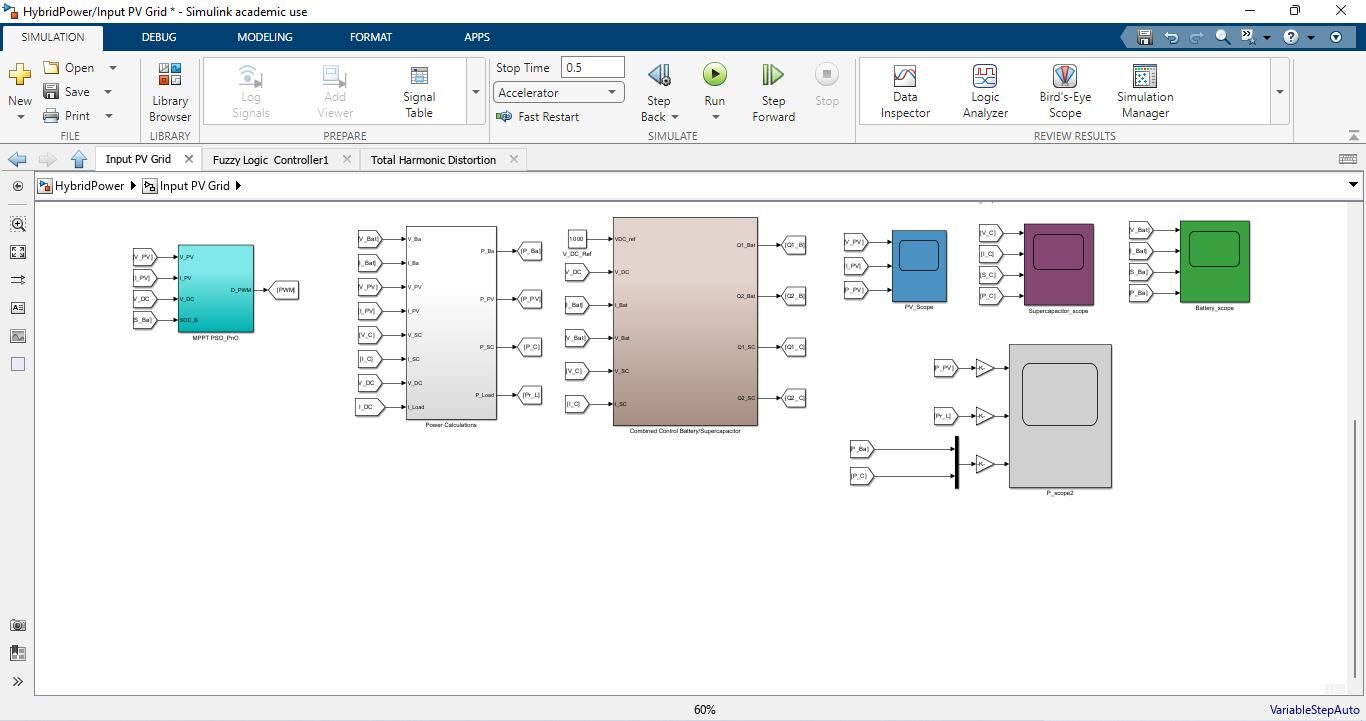
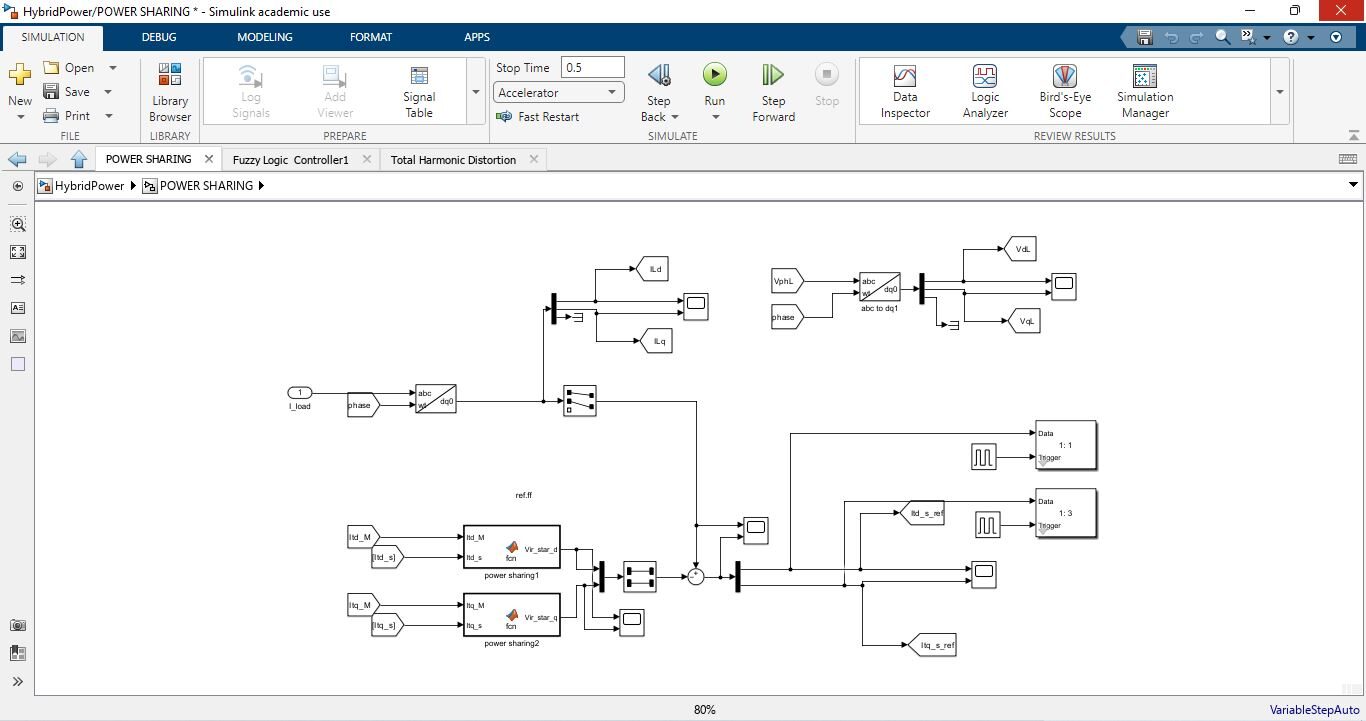
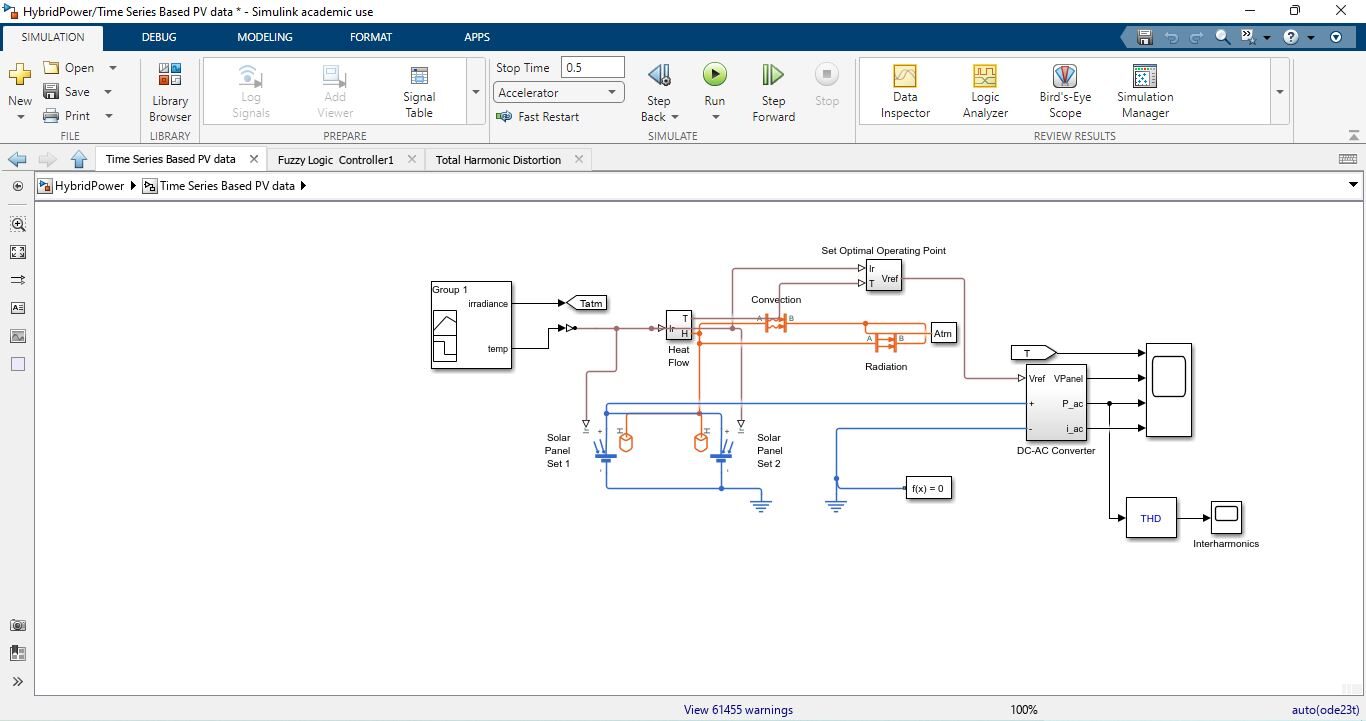
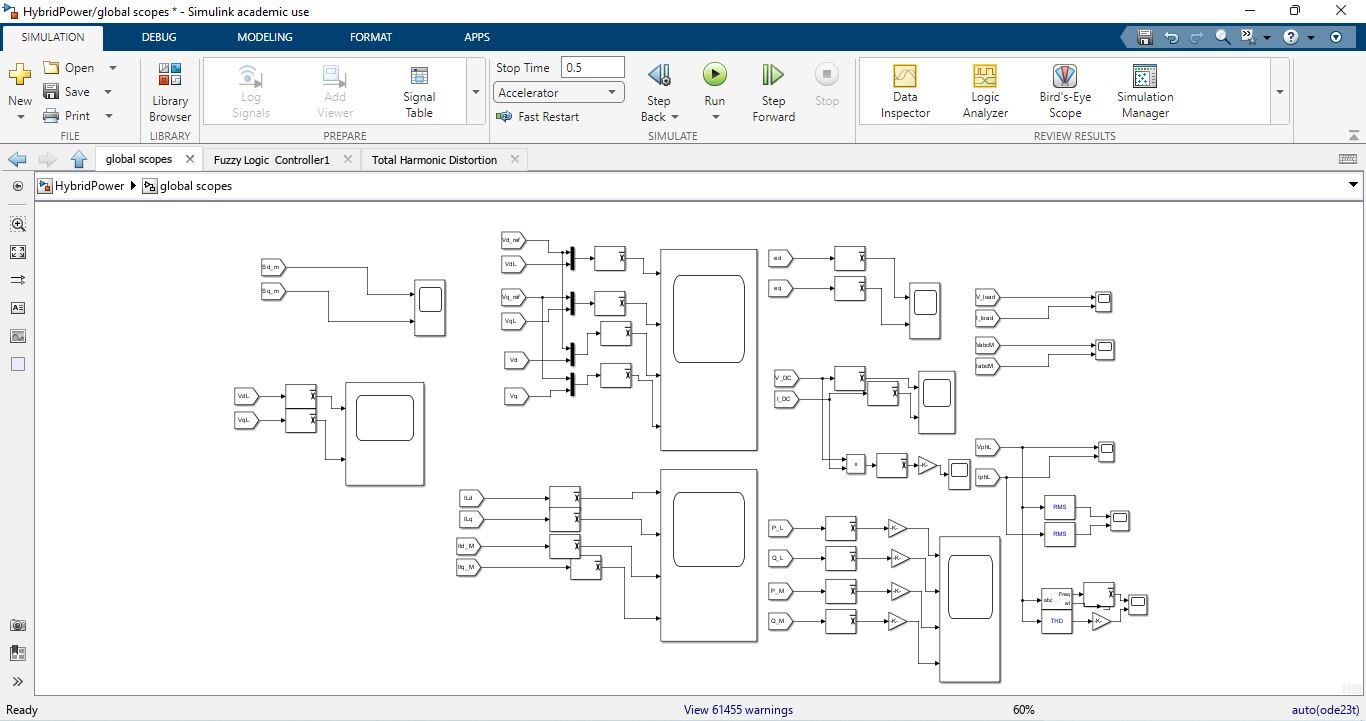
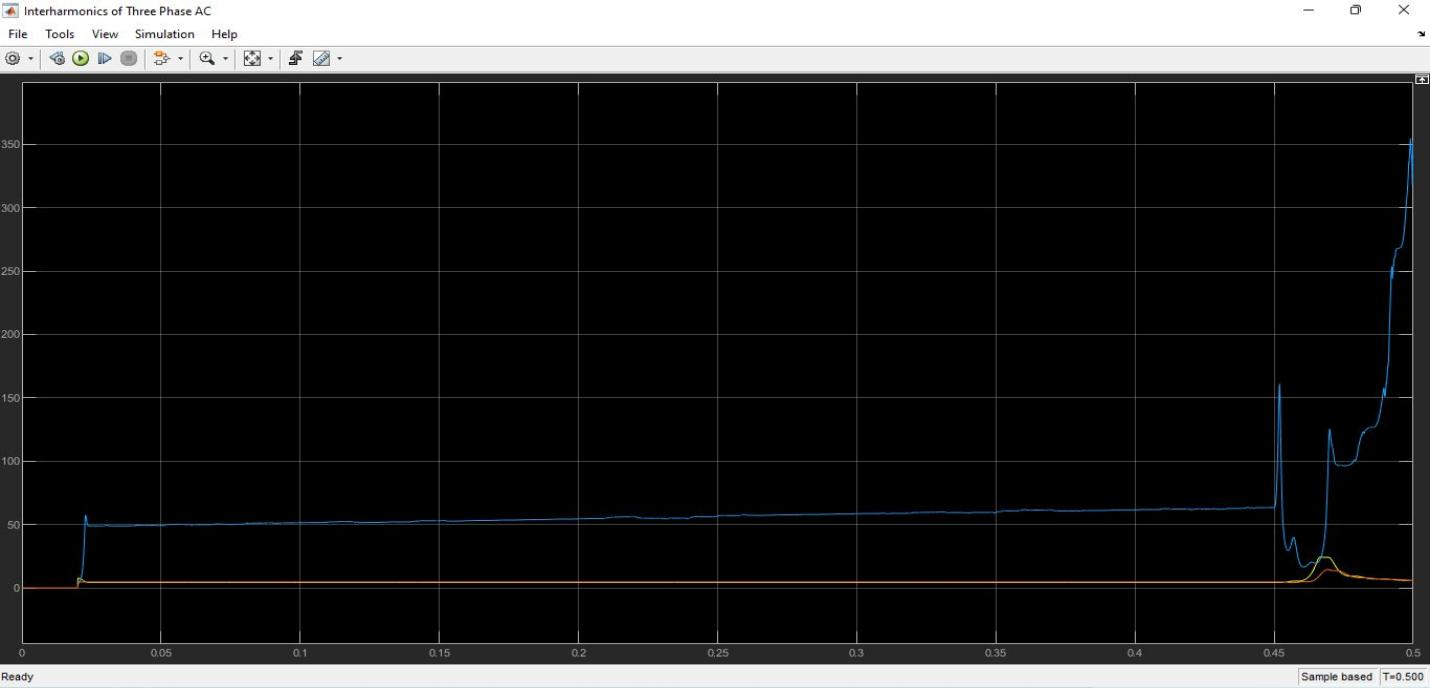
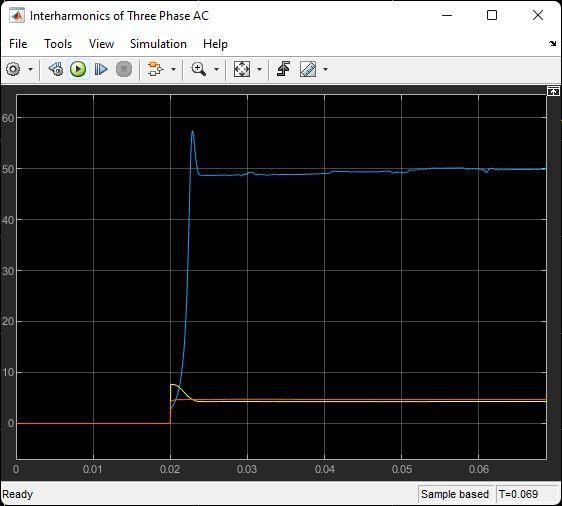
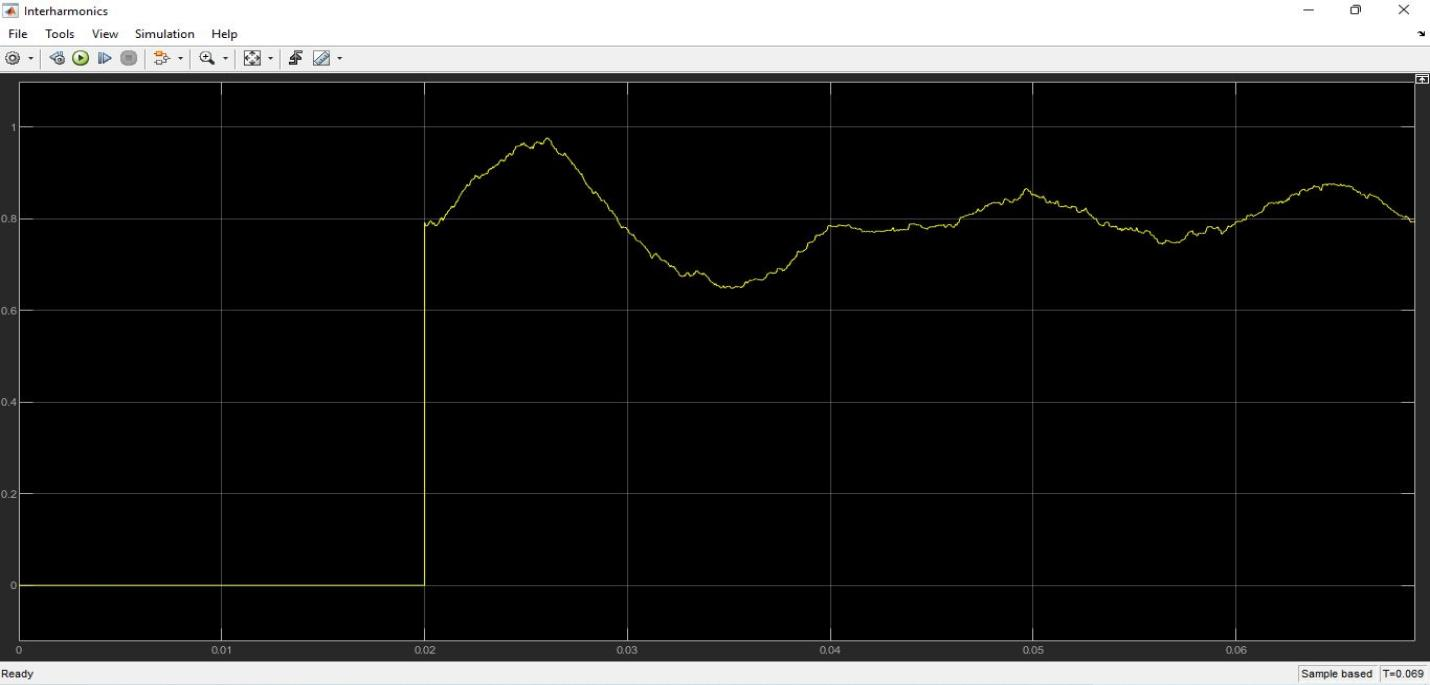
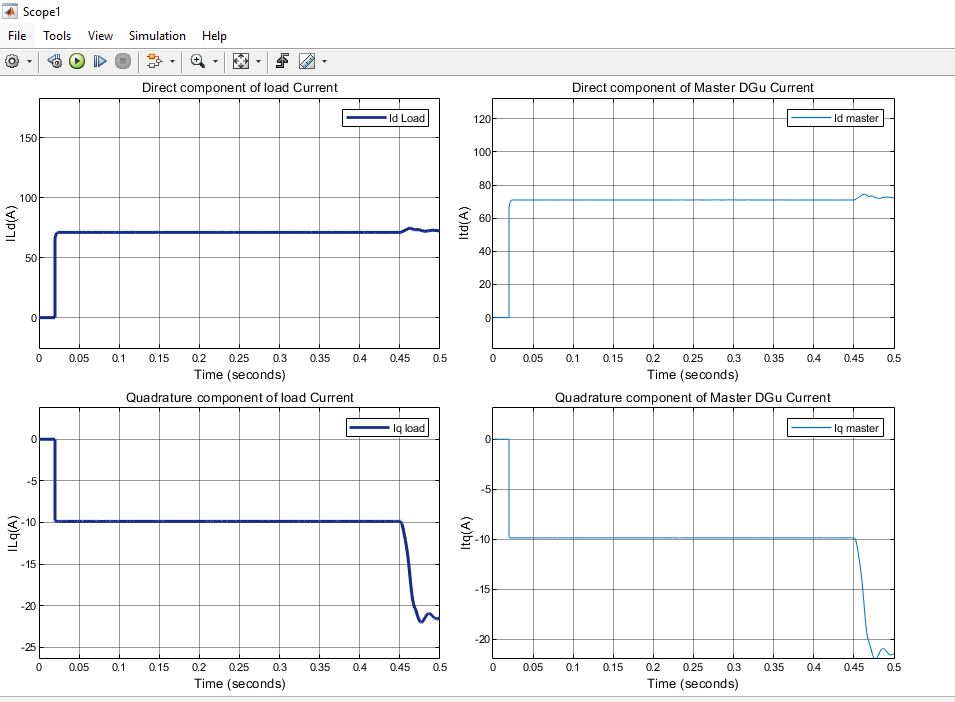
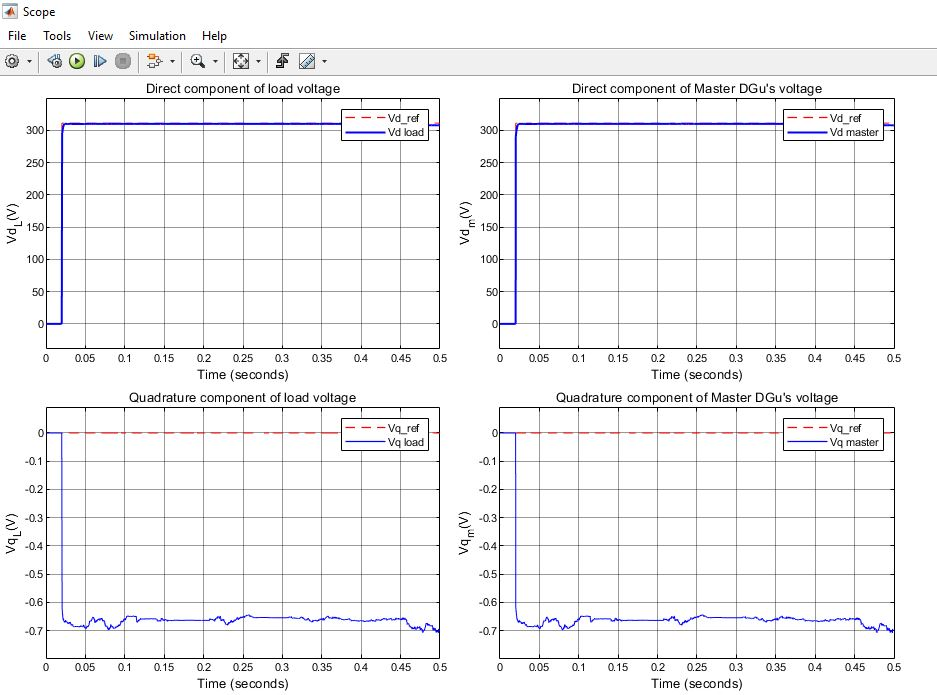
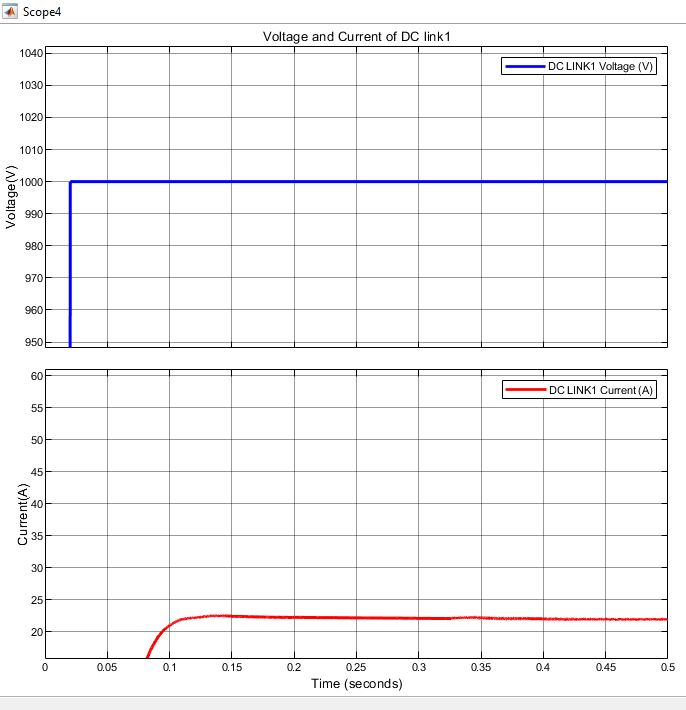
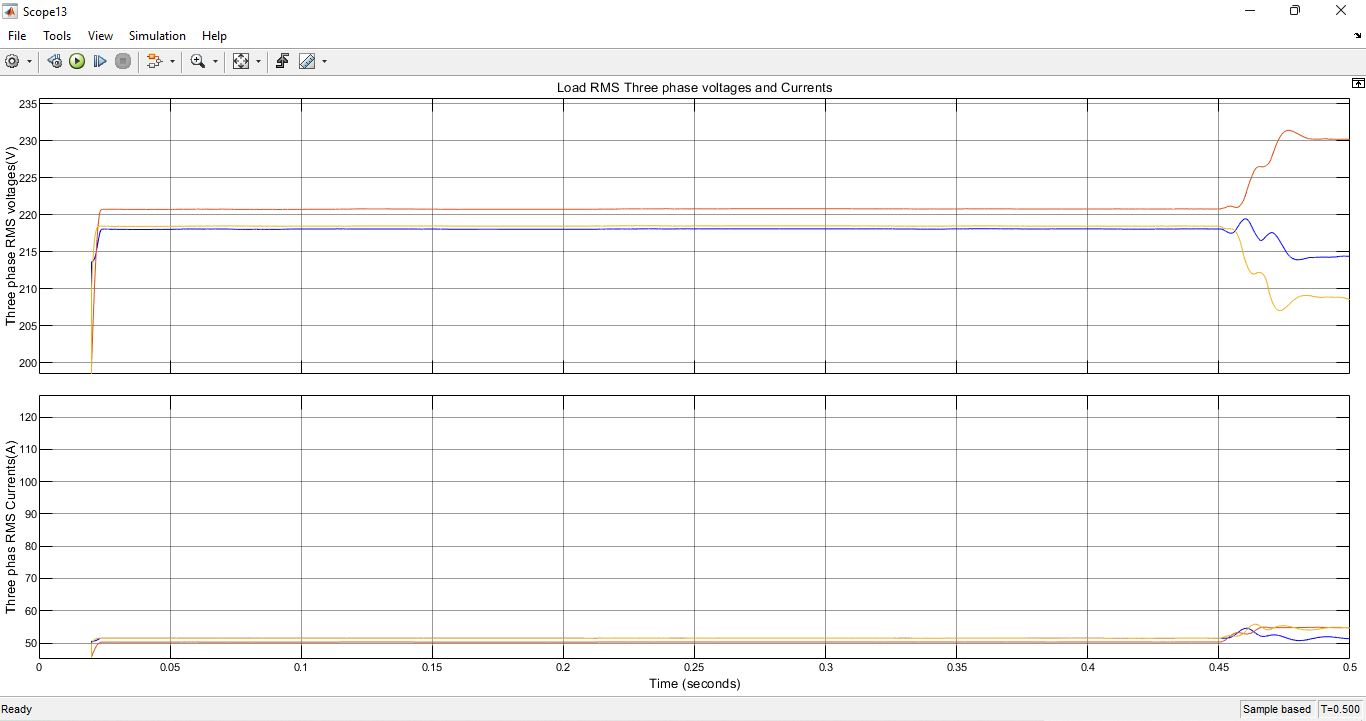
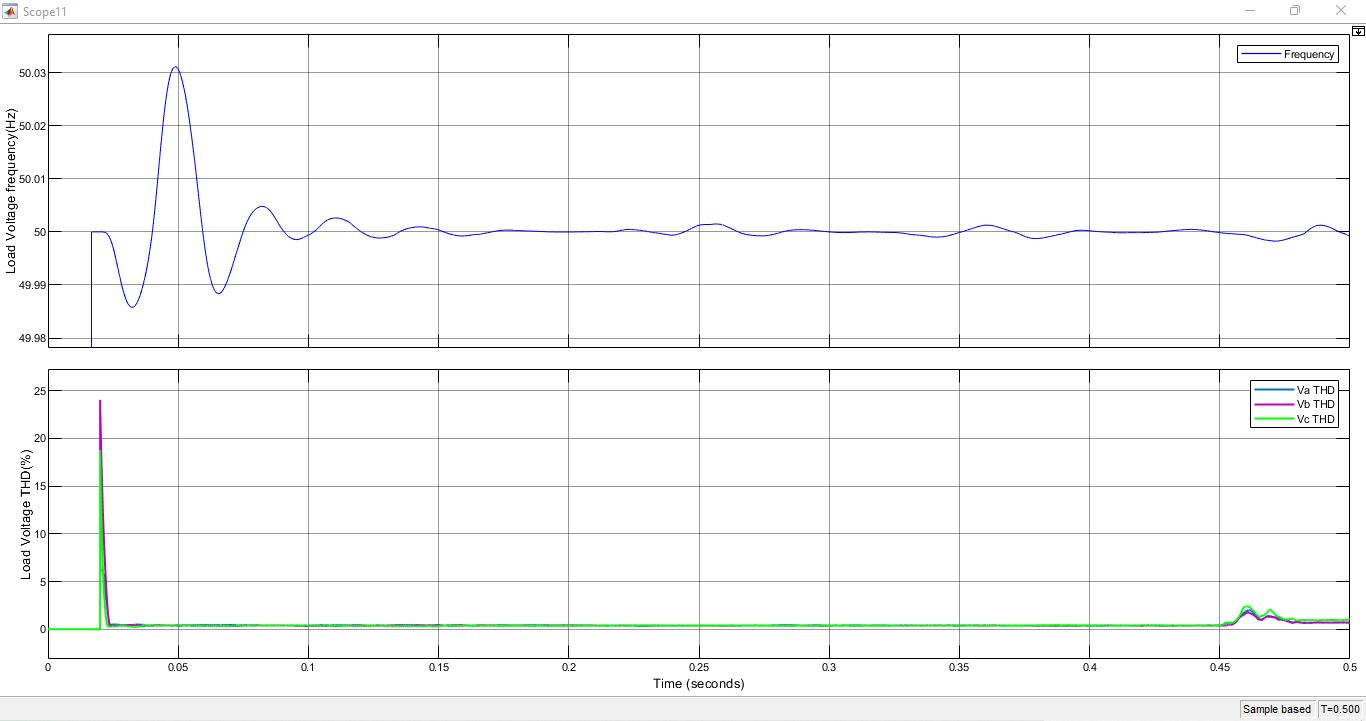
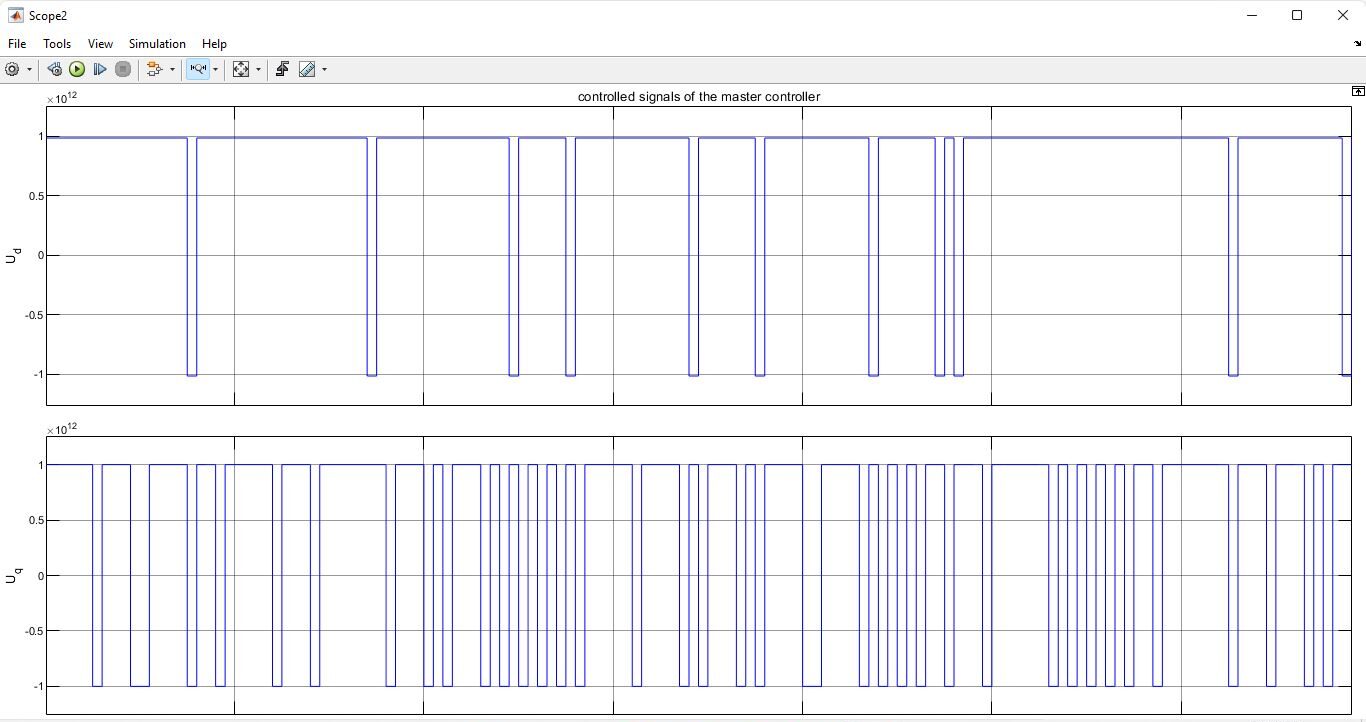
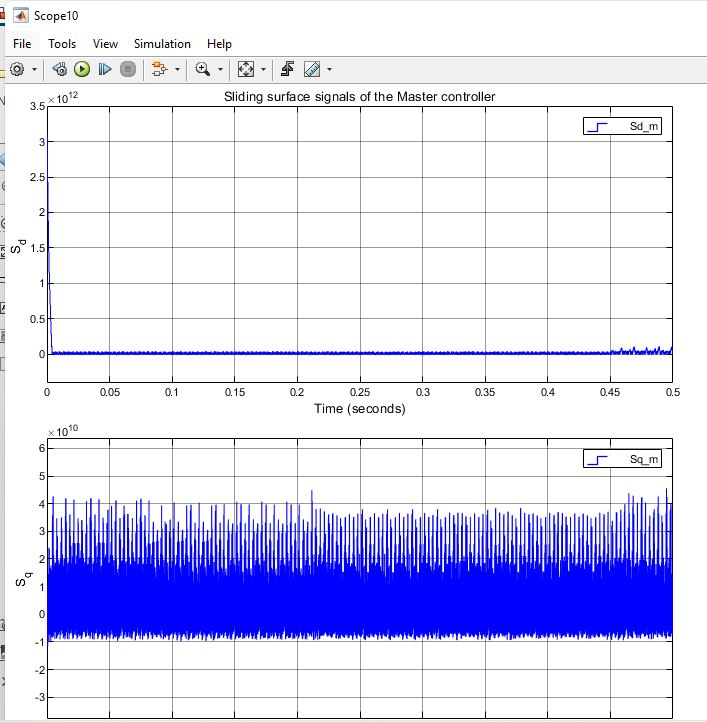
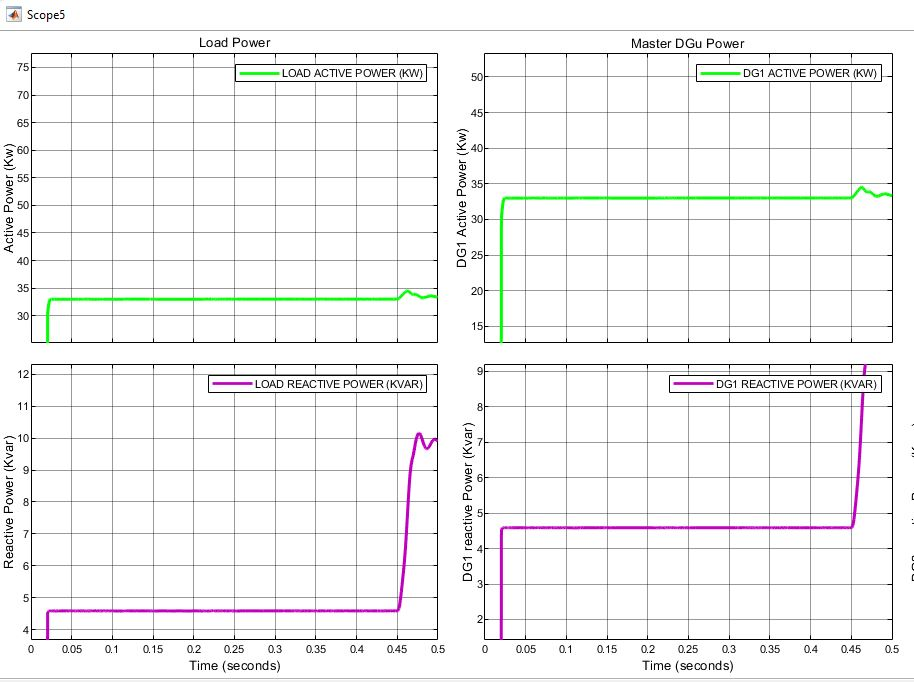
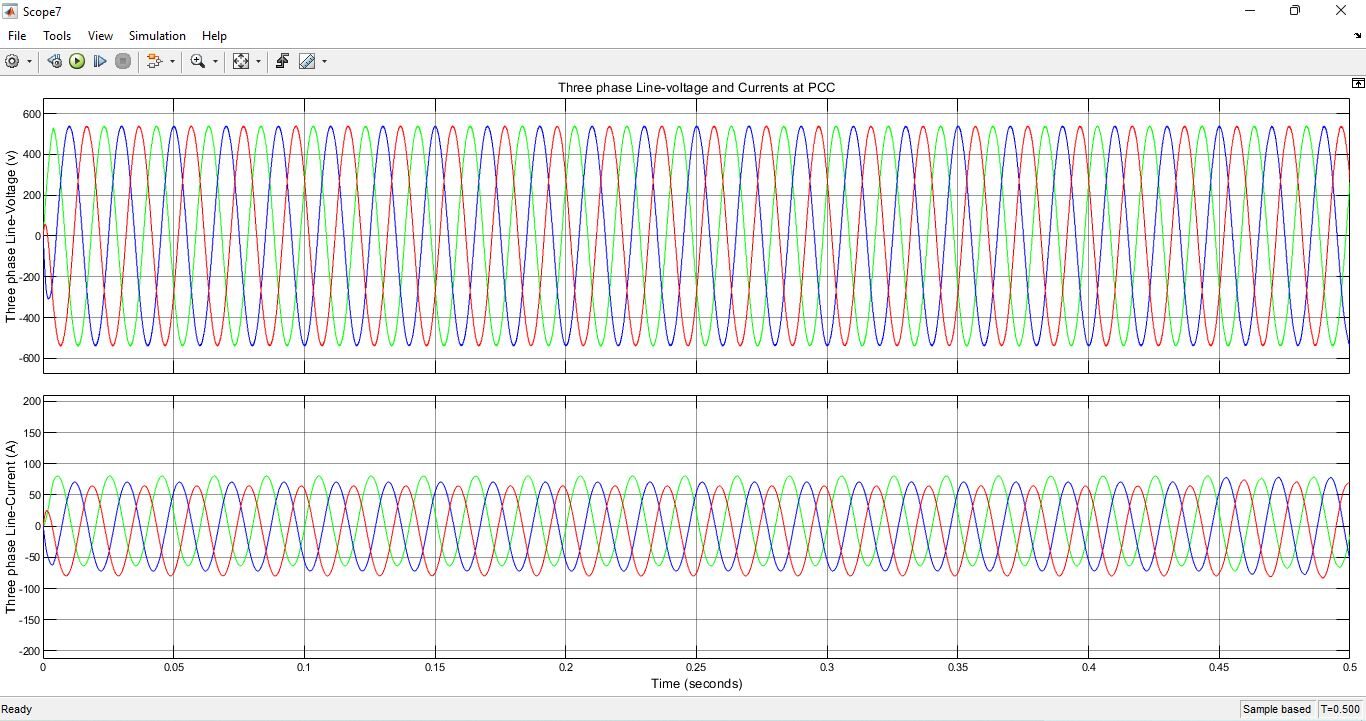
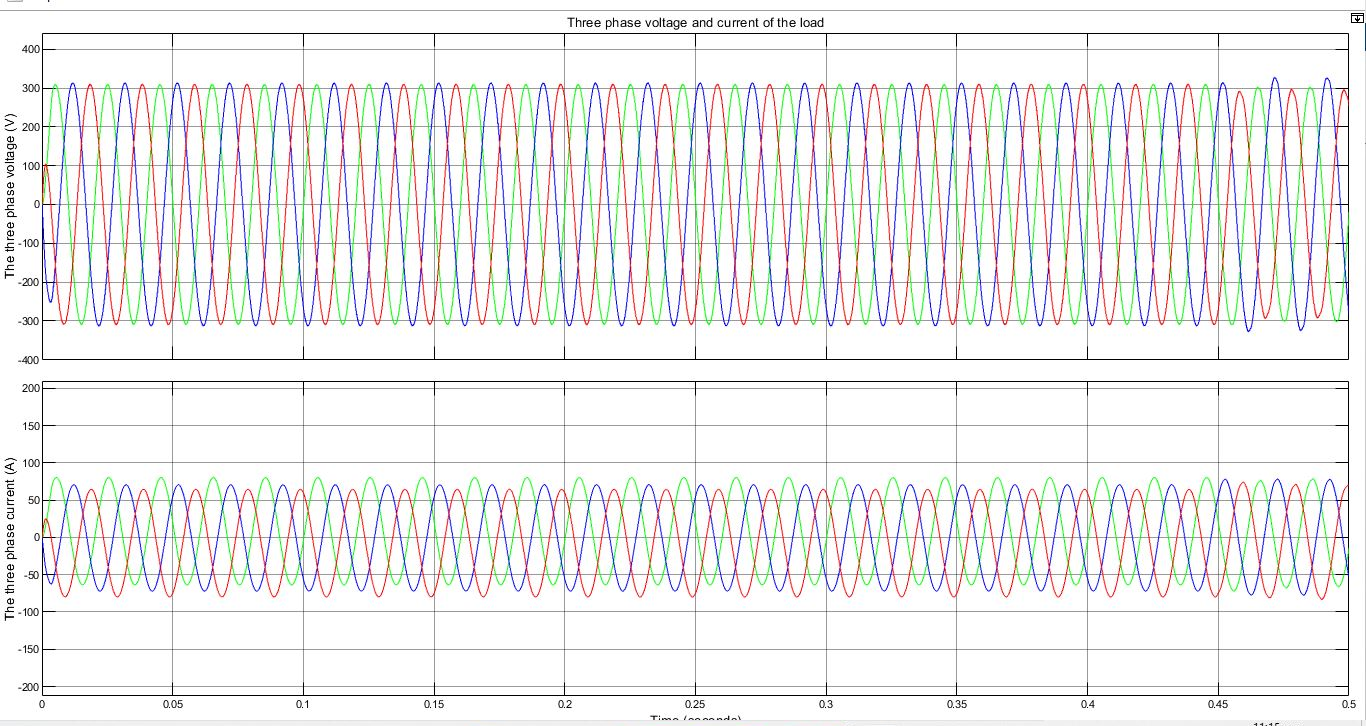
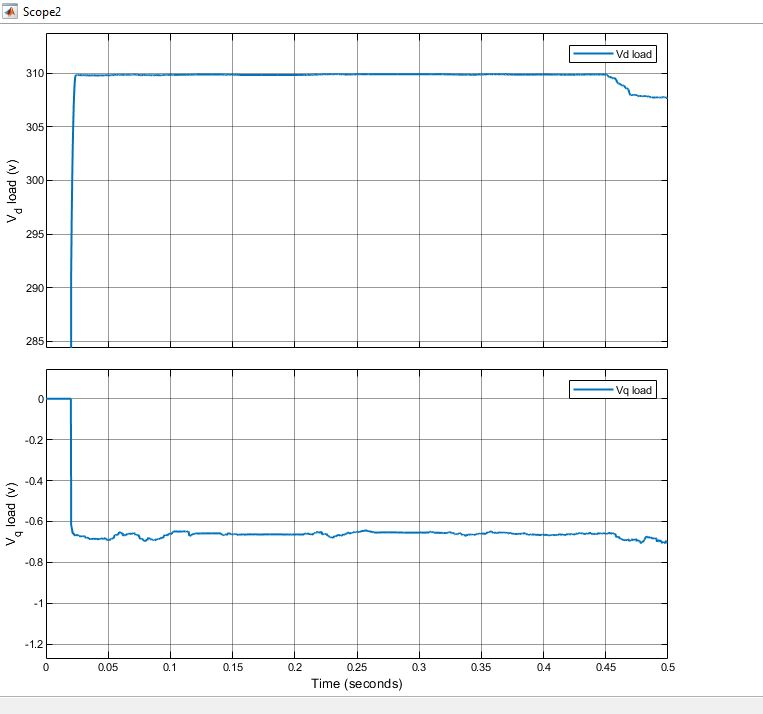

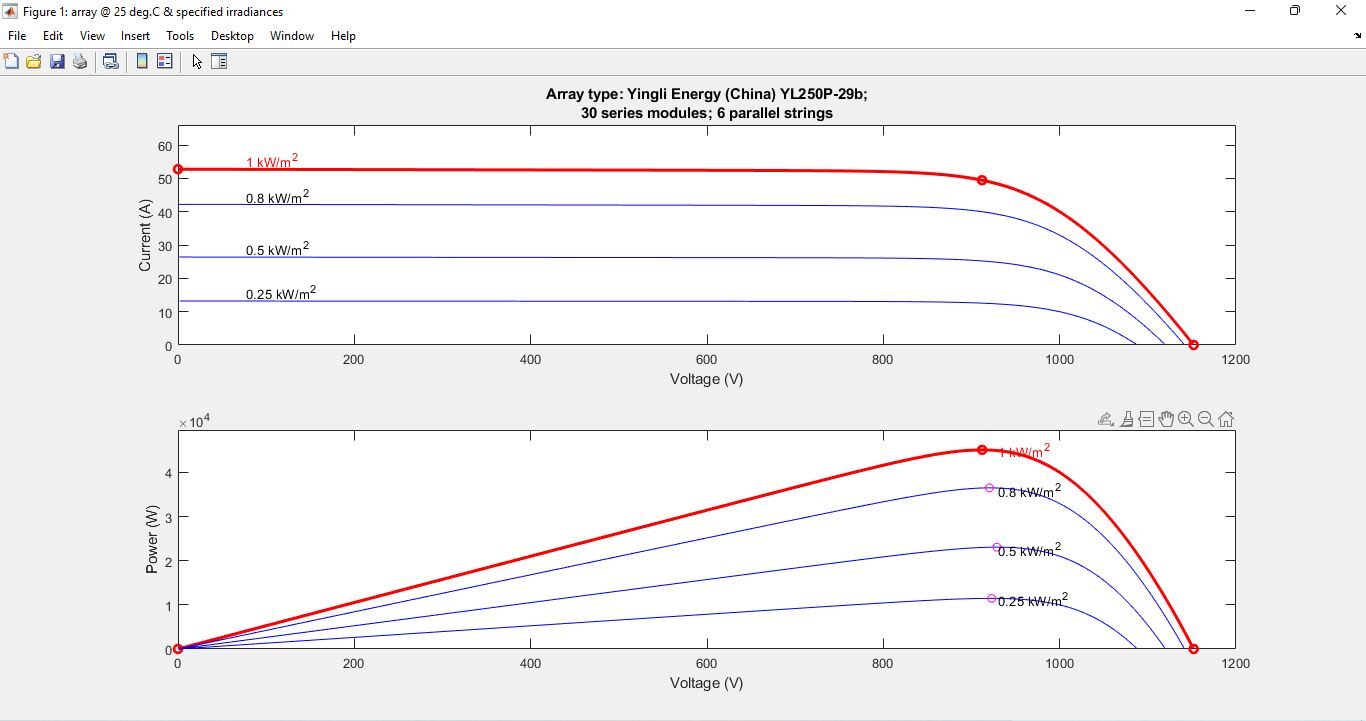
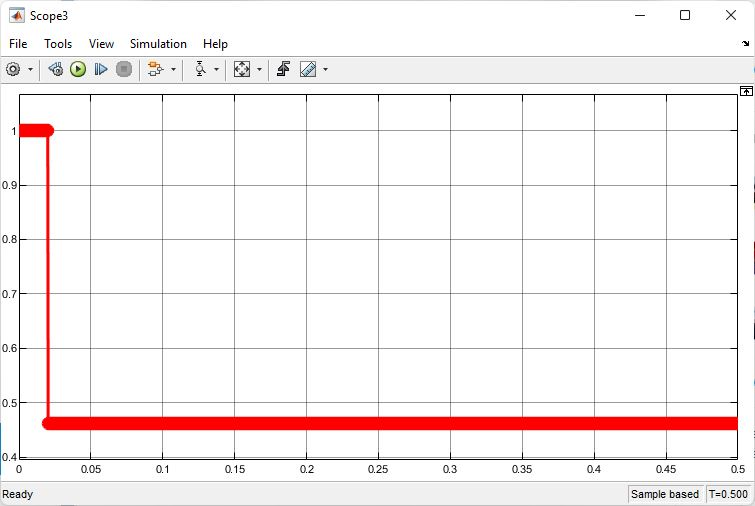
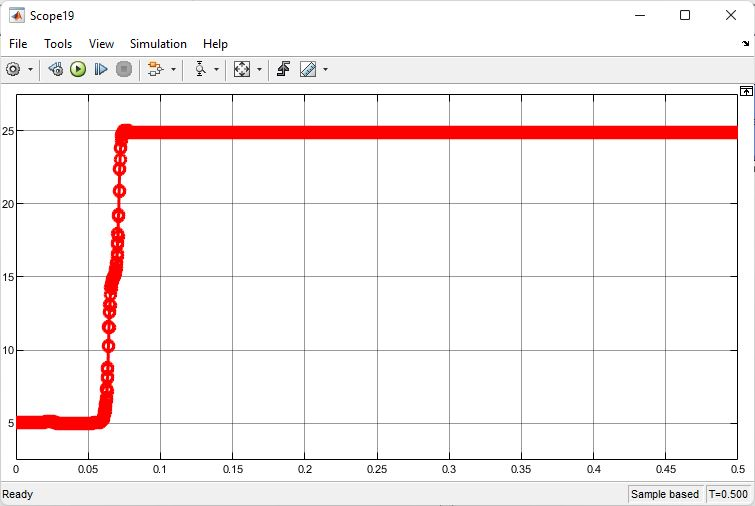
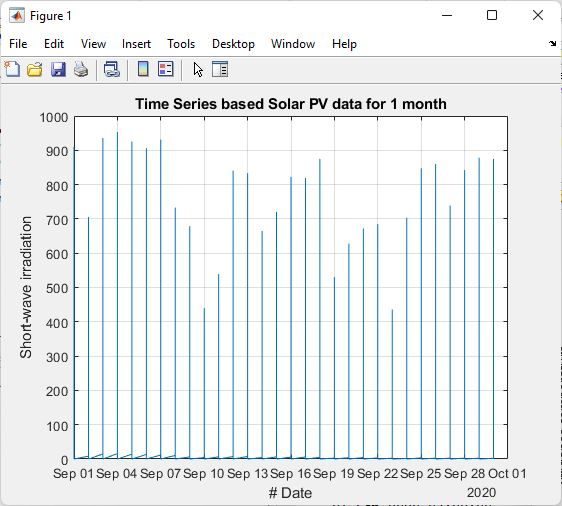
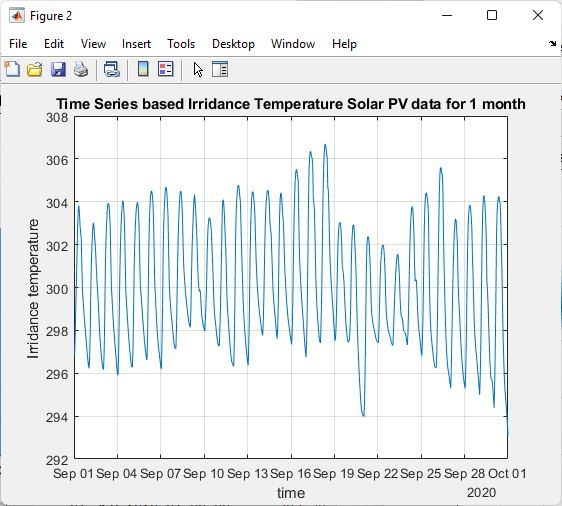
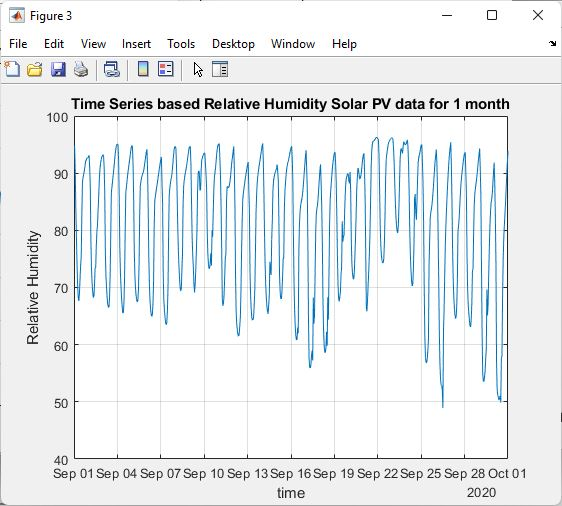
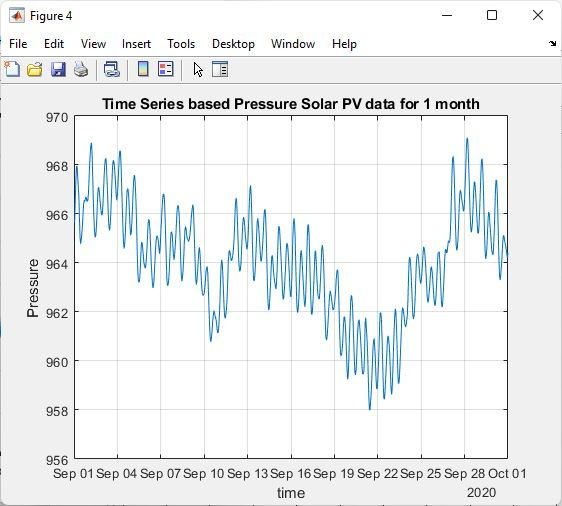
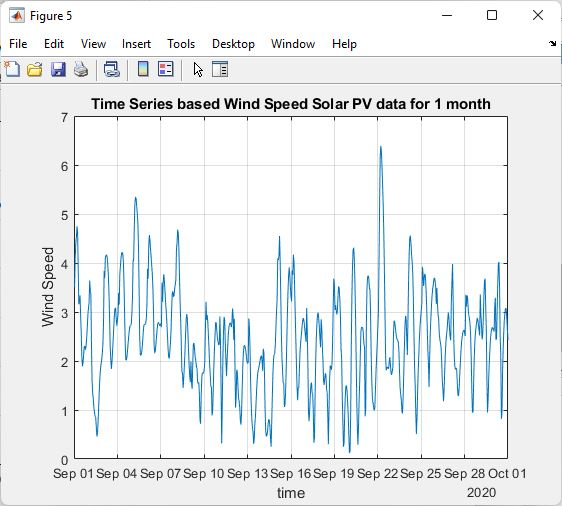
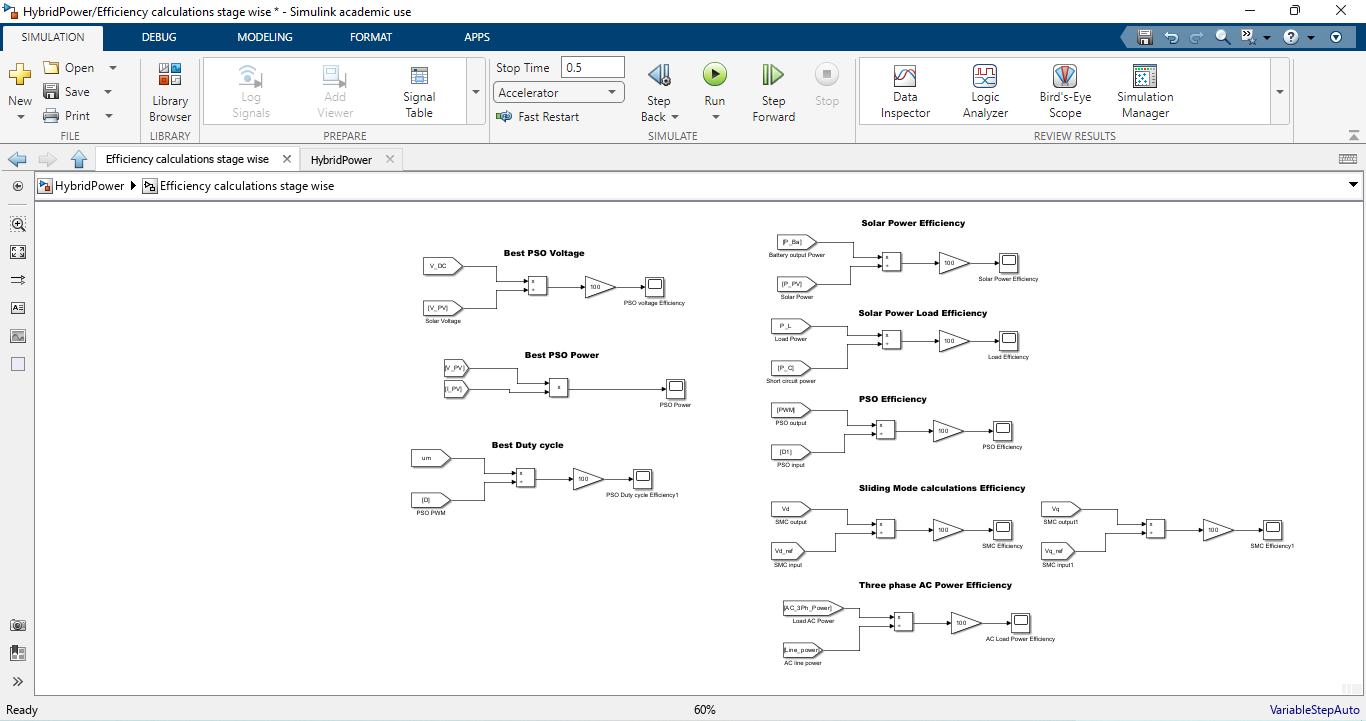
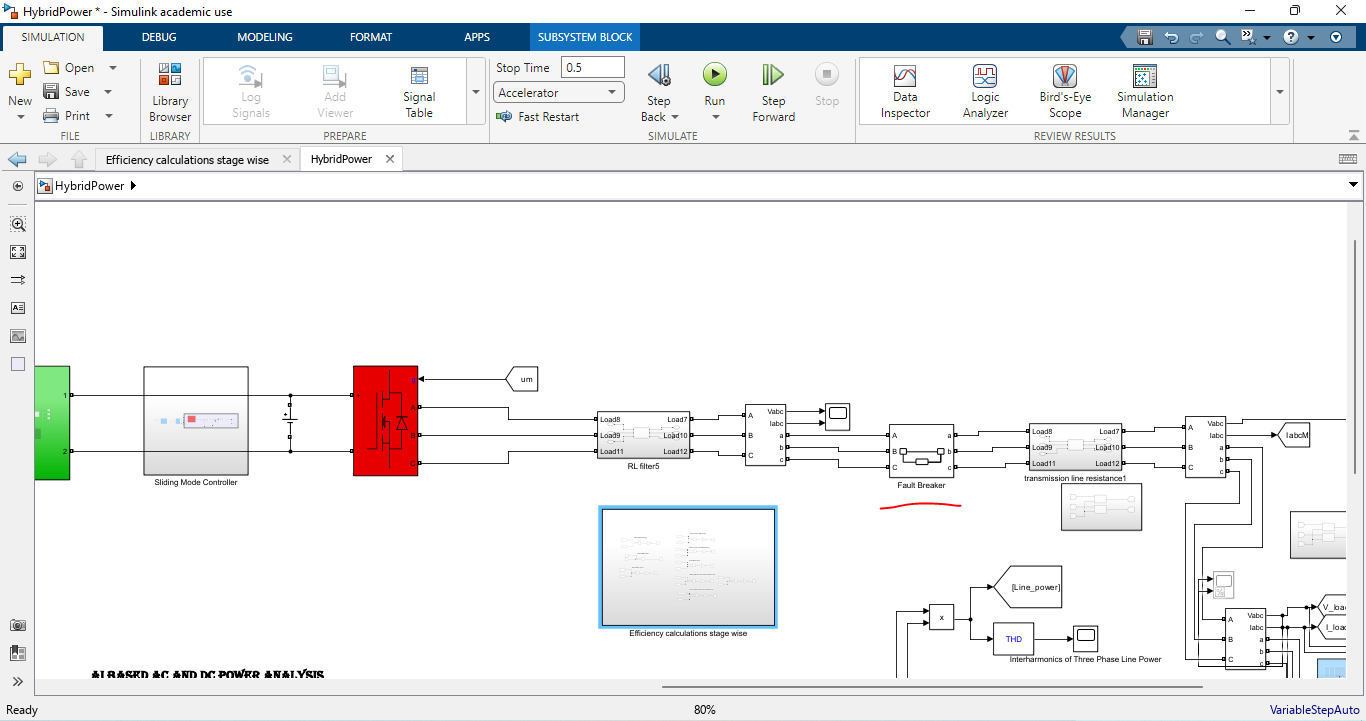
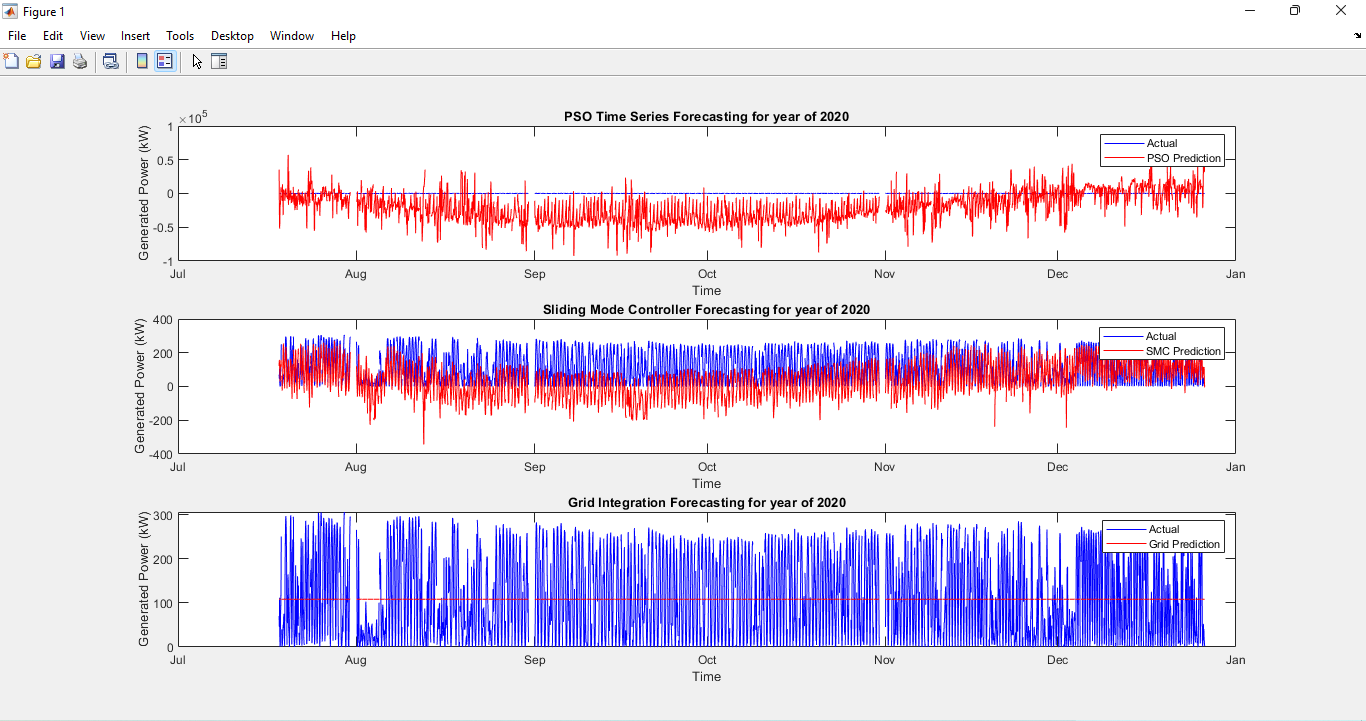

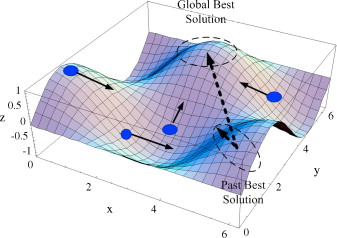


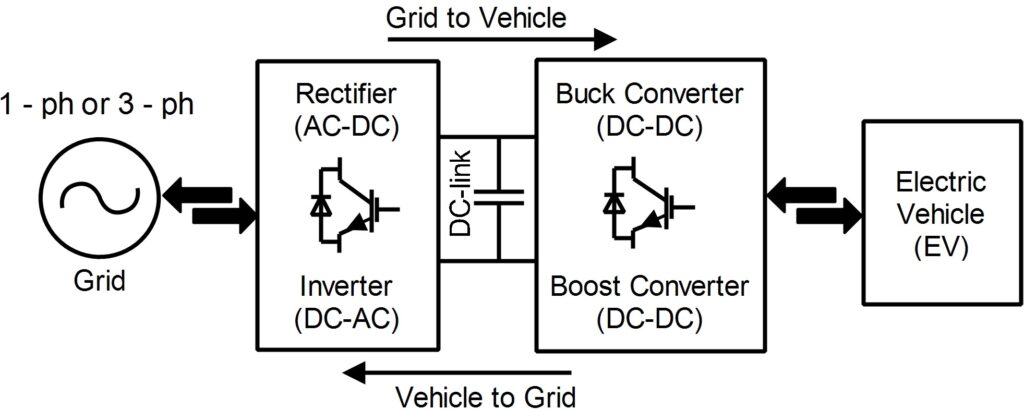
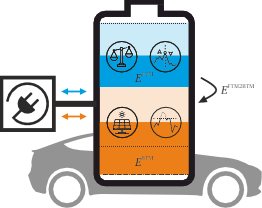


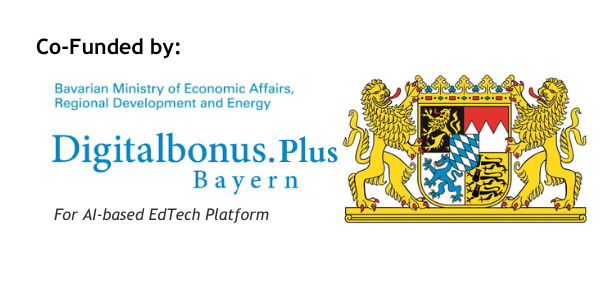



Responses